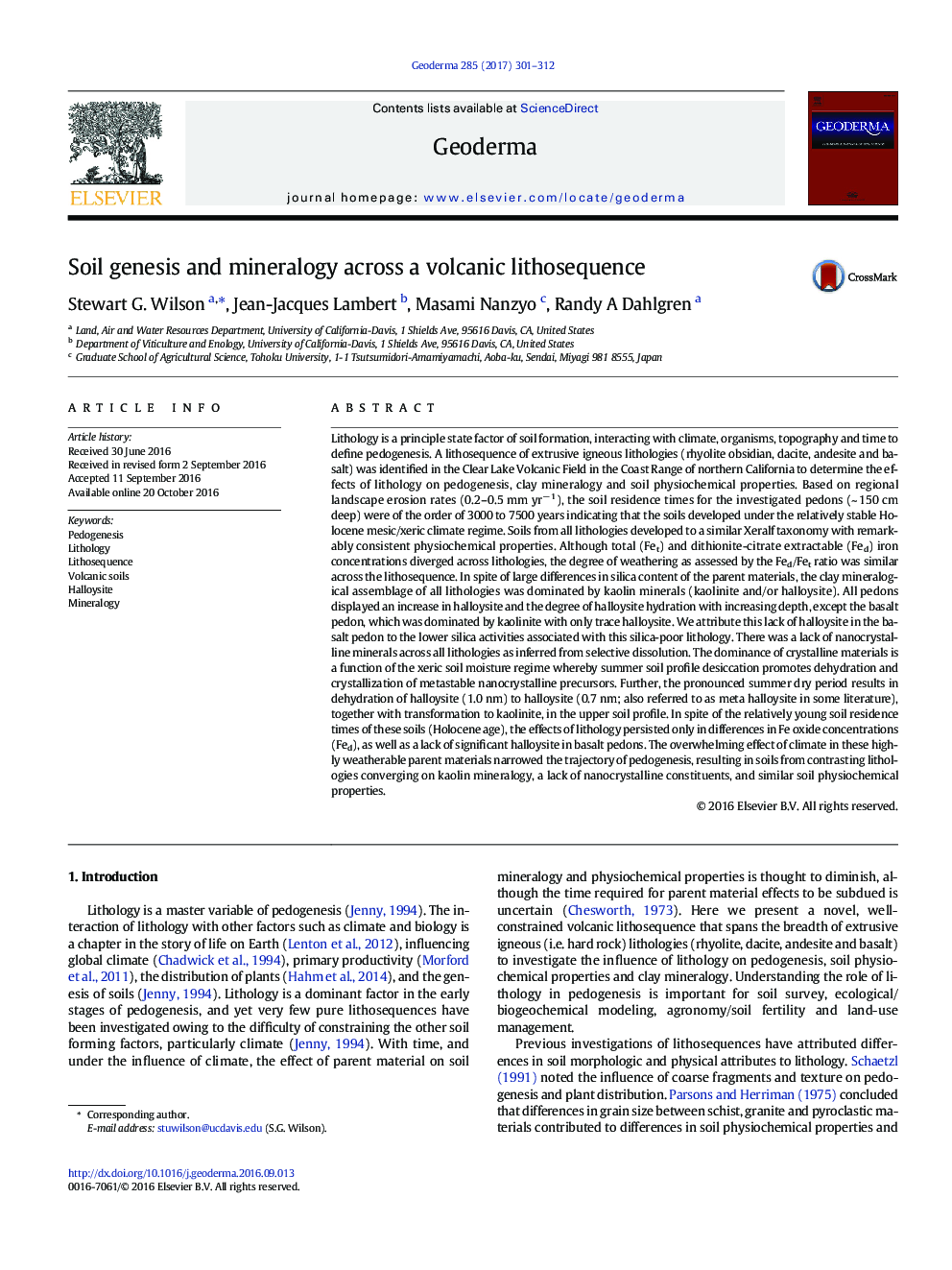| کد مقاله | کد نشریه | سال انتشار | مقاله انگلیسی | نسخه تمام متن |
|---|---|---|---|---|
| 6408235 | 1629432 | 2017 | 12 صفحه PDF | دانلود رایگان |
- Volcanic soil lithosequence spanning rhyolite, dacite, andesite and basalt
- Soils from diverse lithologies converged on kaolin mineralogy, within Holocene.
- Pedogenic and total Fe diverged, maintaining the imprint of lithology
- Climate subdued influence of lithology on mineralogy and physiochemical properties
- Degree of weathering, Fed/Fet, similar, despite stark differences in Fed and Fet
Lithology is a principle state factor of soil formation, interacting with climate, organisms, topography and time to define pedogenesis. A lithosequence of extrusive igneous lithologies (rhyolite obsidian, dacite, andesite and basalt) was identified in the Clear Lake Volcanic Field in the Coast Range of northern California to determine the effects of lithology on pedogenesis, clay mineralogy and soil physiochemical properties. Based on regional landscape erosion rates (0.2-0.5 mm yrâ 1), the soil residence times for the investigated pedons (~ 150 cm deep) were of the order of 3000 to 7500 years indicating that the soils developed under the relatively stable Holocene mesic/xeric climate regime. Soils from all lithologies developed to a similar Xeralf taxonomy with remarkably consistent physiochemical properties. Although total (Fet) and dithionite-citrate extractable (Fed) iron concentrations diverged across lithologies, the degree of weathering as assessed by the Fed/Fet ratio was similar across the lithosequence. In spite of large differences in silica content of the parent materials, the clay mineralogical assemblage of all lithologies was dominated by kaolin minerals (kaolinite and/or halloysite). All pedons displayed an increase in halloysite and the degree of halloysite hydration with increasing depth, except the basalt pedon, which was dominated by kaolinite with only trace halloysite. We attribute this lack of halloysite in the basalt pedon to the lower silica activities associated with this silica-poor lithology. There was a lack of nanocrystalline minerals across all lithologies as inferred from selective dissolution. The dominance of crystalline materials is a function of the xeric soil moisture regime whereby summer soil profile desiccation promotes dehydration and crystallization of metastable nanocrystalline precursors. Further, the pronounced summer dry period results in dehydration of halloysite (1.0 nm) to halloysite (0.7 nm; also referred to as meta halloysite in some literature), together with transformation to kaolinite, in the upper soil profile. In spite of the relatively young soil residence times of these soils (Holocene age), the effects of lithology persisted only in differences in Fe oxide concentrations (Fed), as well as a lack of significant halloysite in basalt pedons. The overwhelming effect of climate in these highly weatherable parent materials narrowed the trajectory of pedogenesis, resulting in soils from contrasting lithologies converging on kaolin mineralogy, a lack of nanocrystalline constituents, and similar soil physiochemical properties.
Journal: Geoderma - Volume 285, 1 January 2017, Pages 301-312
